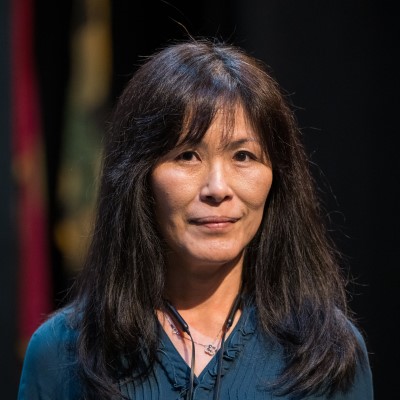Real Story: Miki Steiger
Miki Steiger
CSM Alum, Phlebotomy Technician

I was born in Yokohama, Japan. After graduating from high school, I went to nursing college and acquired a national nursing license in Japan.
My nursing career of about 20 years in Japan was mostly in the dialysis field. I supported outpatient dialysis patients, not only in treatment, but in all aspects of their lives.
Unlike in the U.S., where healthcare is divided up into different branches of labor, nurses in Japan do everything: plan and record nursing care; educate patients; treat wounds; give injections and draw blood; administer medications; support family members; mediate among social workers, helpers, and patients; assist doctors; change linens and diapers; conduct nursing research; take infection-control and accident-prevention measures; hold study groups and teach students; study to expand their skills; and more.
I was very busy because I had to handle all kinds of tasks. However, my work offered me rare and incredible opportunities like chairing and presenting research at academic conferences, contributing to a medical textbook, and restructuring the hospital's disaster preparedness plan based on the experiences of the earthquake and tsunami disasters of 2011.
As for learning English, I started attending an intensive English school when I was 11 years old and took English classes in junior high school, high school, and nursing college. I also attended an English conversation school when I was a nursing student, hung out with friends from overseas, and went on a short-term study abroad program in Scotland. I think I had more opportunities to encounter real English than the average Japanese person. (To be sure, Scottish English is a bit different from American English, but it is still the same language!)
I had planned to continue as a nurse for much longer, but in 2018, when my American husband’s work brought him back to the U.S., I quit nursing and accompanied him. Although I quickly got used to a completely different, carefree, and relaxed lifestyle, I also wanted to return to nursing, so I started studying with some Japanese nurse friends to try for my certification as a registered nurse (RN) here in the U.S.
For Japanese nurses to obtain an RN license, we have to have CGFNS accreditation for our credits from our Japanese nursing college; pass the NCLEX-RN licensing exam; and receive a high score on the Test of English as a Foreign Language (TOEFL).
In February 2020, I started taking free adult English as a Second Language (ESL) classes at CSM, but the COVID-19 pandemic started shortly thereafter and the school went to online classes. I began to lose my motivation to get my RN license, but I continued taking the ESL class. I think it is very nice that the U.S. has a system in place that allows people to easily take classes for free.
In another twist, in 2022 I became interested in CGI and I immersed myself in creating 3D spaces using the Unity game engine. I started to question whether I wanted to continue to study for a medical certification or to pursue a completely different kind of education in computer graphics.
In the summer of 2022, while talking to a CSM counselor about my future career path, I decided to take a free summer class in healthcare. This was a turning point for me. It was the first time in a long time that I was learning about health care. When I visited a phlebotomy classroom on the CSM campus on the last day of the class and saw the blood collection equipment, I knew I wanted to go back to a career in medicine, and the support from my teachers and classmates gave me the encouragement I needed. I immediately registered for classes online and began working toward phlebotomy completion in September 2022.
Even though I had medical knowledge and experience, I sometimes had a hard time understanding the lectures in English because I’m not a native speaker. There are lots of special terms, especially in the medical field, and combing specialized vocabulary with regular conversational English was complicated. That made self-study at home essential for me, and I checked my understanding by reviewing my textbooks and online materials.
In clinical practice, because of the language barrier, I was more worried about communicating with patients and lab instructors than taking blood samples. However, once the practical training began, that anxiety quickly disappeared.
It was also a great experience for me to see part of American medical practice. I tend to compare it with Japan, but I’ve been able to understand the features and advantages of both American and Japanese medicine.
Now that I have completed my phlebotomy program, I’m planning to look for a job as a phlebotomist and to continue preparing for other, more advanced medical certifications. Japanese culture values the spirit of mutual respect and collaboration; I’ve been very fortunate to have a comfortable life in the U.S., and if my skills can help others, I’d like to be able to give something back.
Last updated: 3-1-23
 my.CSMD
my.CSMD